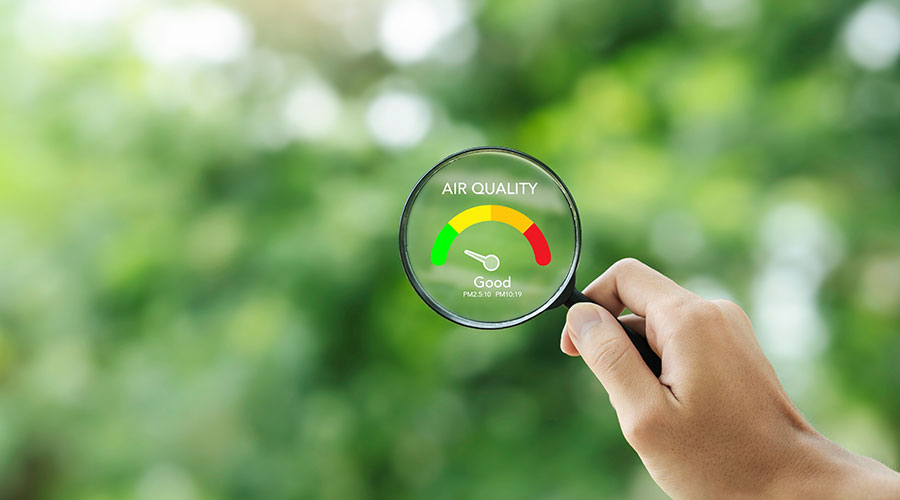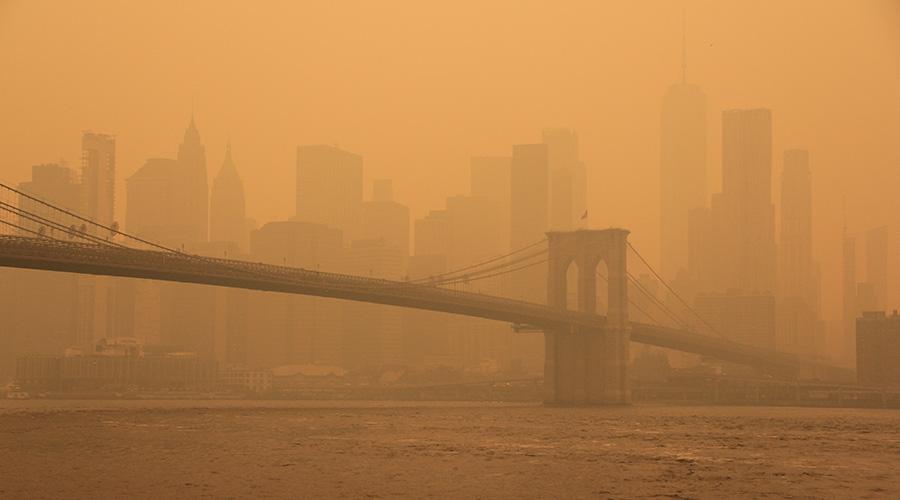Top 10 Mold Hiding Places
The health impact of mold and the high cost of remediation efforts in a few widely publicized incidents have led many facility executives to investigate whether they are at risk for similar exposures and expenses. Unfortunately, while they have examined some of the areas where mold is most likely to occur, many other common areas where mold can easily grow frequently go unnoticed. As a result, many programs developed to control the growth of mold in facilities fall short of their potential.
Fortunately, the growth of mold is predictable. By understanding the conditions needed for mold to thrive, and where those conditions are typically found in facilities, facility executives can readily identify areas to be monitored and then develop a program to minimize the impact that mold can have on the facility and its occupants.
Mold needs four ingredients to grow: organic nutrients, moisture, a surface to grow on and darkness. Unfortunately for facility executives, all four ingredients exist throughout almost all facilities.
Organic nutrients can be provided by dust and dirt particles found on almost all building surfaces. Even the surfaces themselves can serve as the organic nutrient. With temperatures of these surfaces typically ranging between 40 degrees and 100 degrees, and with moisture being supplied by the conditioned air in the building or by leaks from roofs or mechanical systems, conditions are ripe for the growth of mold. Put that surface in a dark area and it becomes ideal for the growth and spread of mold.
Although mold can grow just about anywhere in a building given the right conditions, there are areas where it is most commonly found. These mold hot spots should be on a regular inspection and maintenance program in any effort to reduce mold's impact.
1. HVAC System Drain Pans. Condensate pans are located under and downstream from system cooling coils. As air passes through the coil, moisture in the air condenses and accumulates in the pan. When the system is operating properly, the pan collects and rapidly drains away all condensate. Unfortunately, the system does not always operate properly.
If the flow rate across the coil is too high, condensate can be carried downstream from the pan, soaking the ductwork and creating an environment in which mold can grow. Condensate pan drains can also become plugged with dirt, overflow and soak duct interiors as well as surrounding areas. Condensate pans can corrode through, allowing water to flood areas under the air handler.
To minimize the chances of mold growing as a result of condensate problems, ensure that the pan is properly installed to allow drainage. The pan should be inspected and cleaned regularly to prevent dirt from accumulating and blocking the drain line. Additional access doors are worth considering to ease inspection and cleaning tasks.
2. Ductwork. The air supplied to the building contains a high level of moisture during the cooling season. This moisture can condense and accumulate in duct lining materials. Leaks in ductwork can allow moist air to escape to unconditioned spaces. Damaged insulation can cause moisture to condense on duct exteriors.
To minimize the risk of mold forming in ductwork, start by ensuring that air-flow rates are within the design range. Air-flow rates that are too high can carry moisture from the face of
the cooling coil into the ductwork where it can accumulate on interior surfaces. Consider replacing any ductwork that has an interior lining to minimize the buildup of dirt and moisture on inside surfaces. Duct interior surfaces should be inspected regularly to identify problems early. Inspect for leaks.
An ultraviolet lighting system installed on the duct side of the coils further reduces the risk of mold forming in or being transported by HVAC ducts. The light given off by the system kills most microorganisms in the air stream before they can be introduced into the conditioned spaces.
3. Terminal Units. HVAC terminal units can also serve as a growing space for mold. Condensate pans in fan coil units can plug and overflow. Moisture and dirt can accumulate on grills. Dirt can accumulate in mixing boxes.
All terminal units must be cleaned and inspected at least once per year. Identify and correct leaks.
4. Carpet. Carpet captures and holds dirt. Spills, floods and leaks allow water to soak the carpet, its pad and often the underlayment. Moisture in the room air introduces even more water to the carpet.
The action required to minimize the risk of mold depends on the source of the water and how long the carpet has been exposed. If the space has high humidity levels, increase the air flow from the HVAC system or raise the room temperature to reduce the moisture in the carpet. If a carpet has been flooded with water for less than 48 hours, use a wet vacuum to extract as much water as possible, then steam clean. Use fans or dehumidifiers to help in drying. If the carpet has been flooded for more than 48 hours, or if the source of the water is a sewage leak, discard the carpet.
5. Ceiling Tiles. Acoustical ceiling tiles are porous and readily absorb both moisture and dirt. Of particular concern are tiles located around ceiling HVAC system vents. These tiles are subjected to the highest humidity levels in the space and accumulate far more dirt.
Mechanical system piping also is generally run above suspended ceiling tile. Leaks and condensation from this piping can result in soaked and stained tiles.
An even more common source of water on ceiling tile is roof leaks. While occupants may readily notice the water stains that form on the inside surface of the tile, few ever see the mold that can be growing on the hidden side. All cases where ceiling tile has been stained by water need to be investigated. All sources of leaks must be eliminated before the tiles are replaced or repaired. Unless the damage is relatively minor, water-damaged ceiling tile will require replacement.
6. Cavity Walls. One of the most overlooked areas where mold grows readily is in the open interior spaces of cavity walls. Moisture can get into this space where it condenses on the interior surfaces of the wall. Unless the wall has to be opened for other purposes, mold can grow undetected for years.
There are different ways moisture can gain access to the interior areas of cavity walls. Roof and mechanical system leaks can allow water to soak interior surfaces. During the cooling season, air infiltrating from outside the building through the wall carries vapor that condenses on cooler room wall surfaces. During the heating season, air moving in the opposite direction carries moisture that condenses when it comes in contact with the cooler outside wall surfaces.
To minimize moisture and its effects in cavity walls, leaks must be quickly detected and corrected. Vapor barriers must be properly installed during building construction. All cracks on both interior and exterior surfaces must be filled. Infiltration rates must be reduced by maintaining slightly positive pressure with respect to the outside air.
7. Wallboard. Wallboard located in damp locations is particularly susceptible to mold. Roof and mechanical system leaks, groundwater, floods, condensation: all can soak the wallboard. If it was a one-time event and the water was removed in less than 48 hours with no physical damage to the wallboard, it is possible to allow the material to dry and remain in place. However, if the event has been ongoing, if there is physical damage to the wallboard or if the damage was caused by sewage water, it will be necessary to remove and discard all of the affected wallboard.
To be safe, remove the wallboard to at least 20 inches above the highest point affected by the water. Dry all wall or ceiling cavities before installing the new wallboard. Closely inspect wall corners, particularly those that are on outside walls.
Corners generally do not receive adequate air circulation. Placement of furniture and other objects in the room can further reduce circulation in corners. Inadequate insulation or gaps in insulation in these areas can combine with poor circulation to allow moisture condensation on the wallboard, leading to mold growth. Avoiding mold in these areas may require rearranging some furniture to allow better air circulation as well as more detailed inspections of wallboard surfaces.
8. Masonry Surfaces. When moisture that has migrated through masonry evaporates from the surface of the masonry, it can leave behind powdery deposits. In many cases, these deposits are caused by salts and minerals from the masonry. But in other cases the deposits are actually mold growing on the surface. If mold is suspected, clean the area with a suitable cleaner and monitor it regularly for moisture and additional deposits.
9. Electrical Equipment. Electrical equipment, fixtures and cable can also be a significant source for mold development. Take a close look at the areas surrounding electrical switches, outlets mounted on exterior walls and ceiling-mounted lighting fixtures that are directly beneath unheated spaces. Infiltration of moist, warm air through gaps between these electrical items and the wall or ceiling can create areas that promote the growth of mold. Mold can also grow within electrical conduit, particularly if the conduit has been flooded.
If mold is found in these areas, check the operation of the building's HVAC and exhaust systems to make certain that they are not putting the building interior into negative pressure, something that will significantly increase infiltration rates. Caulk and seal areas around electrical outlets to eliminate gaps that allow air and moisture to enter the building space. And if water is found to be entering electrical conduit or other electrical equipment, find and eliminate the source of the water.
10. Paper. Computers were supposed to make offices paperless, yet somehow the volume of paper that is now generated and stored by organizations has reached record levels. As a result, paper is everywhere. Offices, hallways, stairwells, closets, basements, sheds, and mechanical and electrical equipment rooms have all become archives for tons and tons of paper. Unfortunately, many of these areas were never designed with temperature and humidity controls suitable for paper storage. Even worse, leaks from the mechanical systems or through the building envelope can soak stored paper. Either way, paper, when combined with moisture, allows mold to develop rapidly.
If the paper has been damaged by a leak, and has been exposed for less than 48 hours, dry, photocopy and discard the originals. If the paper has been allowed to remain wet for more than 48 hours, it may be necessary to have the paper items cleaned, frozen and dried by a firm that specializes in restoring damaged paper goods.
To prevent mold from growing on paper, all paper records should be stored in areas where both the temperature and relative humidity are controlled. No boxes of papers should be stacked on floors, particularly basement or ground-floor concrete slabs.
Although these 10 spots represent the most common areas where mold lurks in buildings, facility executives must understand that mold can occur anywhere conditions are right. A good preventive program begins with having maintenance personnel trained to detect water damage and mold growth. Custodians, HVAC mechanics, plumbers, carpenters and electricians all work regularly with building systems and components where mold is most commonly found. By identifying mold and the conditions that support its growth early, facility executives can greatly reduce the risk of having to undertake a major remediation effort.
Related Topics:











